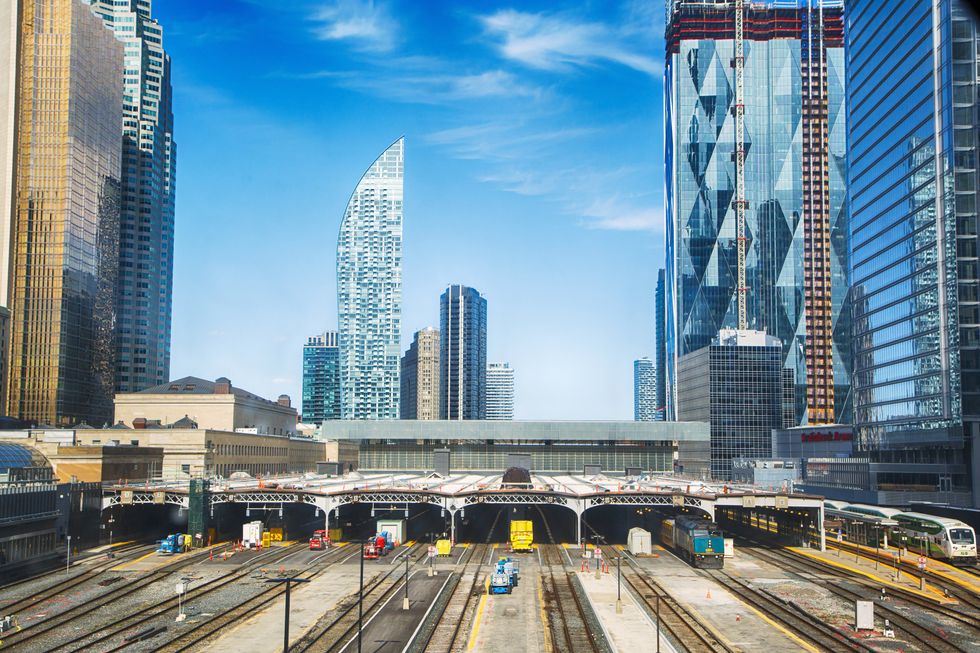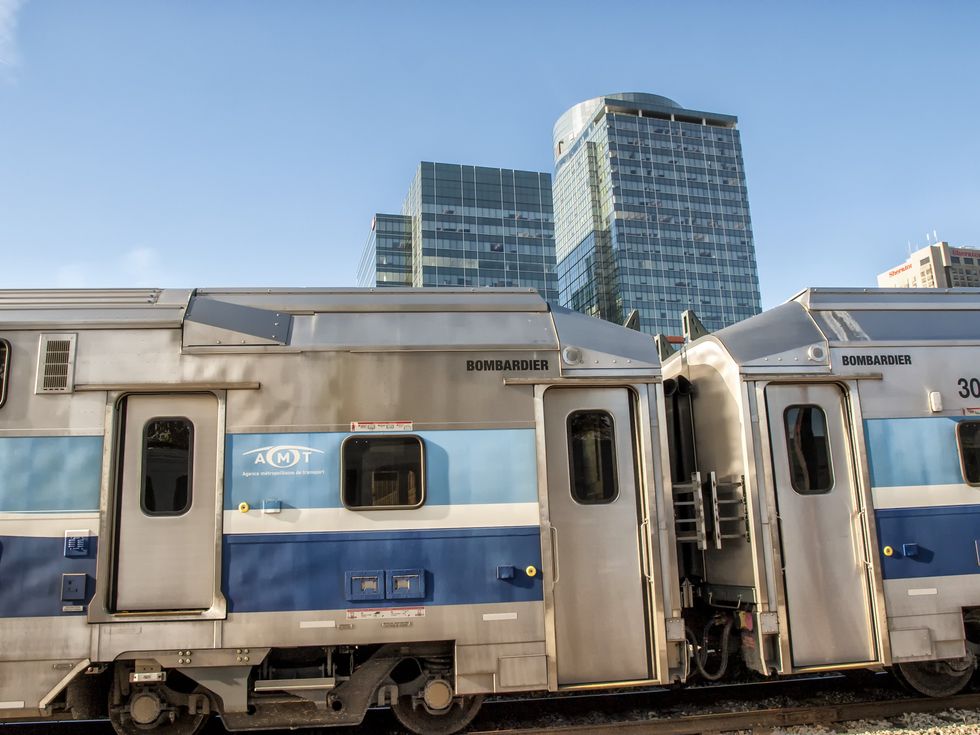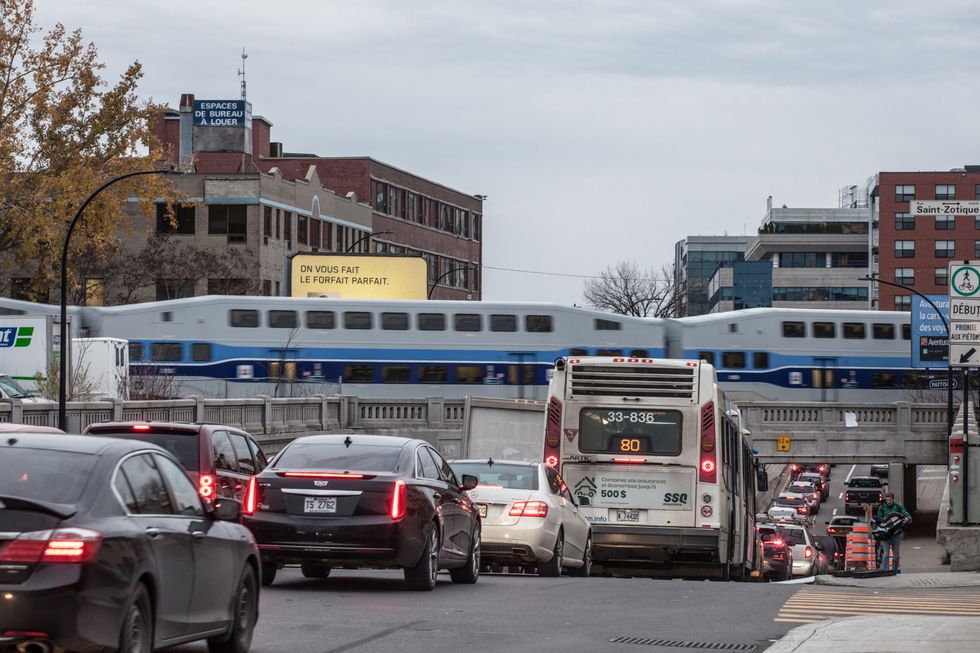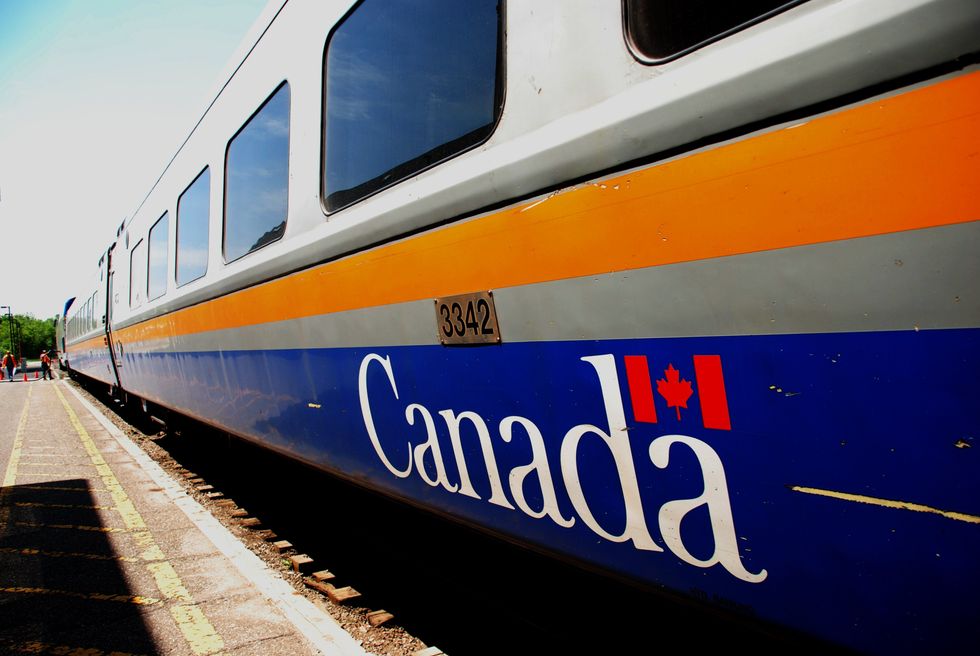It will achieve higher speeds than conventional rail, capable of reaching around 200 km/h, and run frequently on a regular schedule. High-speed rail, on the other hand, exceeds speeds of 250 km/h and can be found in many European and Asian cities.
While Canadians may not get the ultra-fast commutes seen in countries like Japan, China, Germany, and France — even the slowest projections of 150 km/h averages would mean half the travel time compared to cars and current VIA trains from Montreal to Toronto, Ottawa, or Quebec City.
The upgrade will bring the country up to speed with international transportation standards and create a modern, efficient rail system that reshapes the way people get around. Here's what the project will mean for cities along Canada's busiest route:
Urban development will flourish

The Toronto Union station terminal services Go Trains and VIA Rail Canada.
Anjelagr | Dreamstime
Cities along the path of Canada's new high-frequency rail line will likely grow larger and taller. But for that to happen, major infrastructure changes are required.
Current tracks are mostly owned by CN, and aren't yet electrified. So first, the tracks need power and upgrades to allow for faster service. For VIA HFR to run top-priority passenger trains, new tracks will be added alongside freight lines, to bypass slow-moving shipments and accommodate more frequent trains.
Smaller cities like Trois-Rivières, Peterborough, and Kingston will gain access to bigger job markets. Residents will have the opportunity to work in urban areas while enjoying lower living costs back home. By comparison, Chicago and Los Angeles developed into major urban centres largely because they started as railway hubs.
Similarly, in Spain, cities like Zaragoza experienced growth following the introduction of high-speed rail that connected Madrid and Barcelona in the late 20th century.
Real estate prices will go up

A train passes in front of a highrise in Montreal.
Michel Bussieres | Dreamstime
Once high-frequency rail starts rolling between Quebec City and Toronto, real estate prices will skyrocket in areas close to the stations. The trend is a well-documented effect of major transportation upgrades enhancing local property values.
For example, in England, London’s new Elizabeth Line caused nearby housing prices to increase by 50% between 2020 and 2024. Japan has also demonstrated the transformative impact of high-speed rail on urban growth since its inception in 1964. It houses the world's first megalopolis, the Taiheyō Belt, which now connects over 74 million inhabitants.
In Montreal, the pattern is also evident with burgeoning large condo developments. Developers sometimes choose to pay fines rather than include low-cost dwellings in these projects, viewing the penalties as additional construction costs. They're likely banking on the future demand for high-value real estate, knowing proximity to fast transit services significantly boosts property appeal. Prime locations near rapid transit stations command premium prices due to increased business and career opportunities.
Less reliance on cars

Vehicles backed up on av. du Parc in Montreal, while a train passes over a bridge.
Jerome Cid | Dreamstime
The way people commute, visit relatives, and attend events in other cities is often by car. Driving on highways like the 401 might seem convenient, but dealing with parking and vehicle security in another city can be a hassle. As population density in urban areas increases, owning a car can shift from a convenience to a burden.
Since 2007, over 50% of the global population resides in cities rather than rural areas. This trend of urbanization continues in Canada, with more than 73% of residents living in urban areas with populations exceeding 100,000. As urban populations swell, the need for efficient and environmentally friendly transportation is becoming more critical. Shifting from car-centric travel is the future direction, and although large rail projects may seem slow to complete, they promise a lasting change in travel habits.
In Montreal, the rise of tall residential buildings is becoming more common, particularly near central transit hubs. With Laval set to host a VIA HFR station, and a new REM stop already in the works, a shift in primary modes of transportation from car to rail is expected.
Commuting between cities will be commonplace

A VIA Rail train on track.
Chhobi | Dreamstime
High-frequency rail will also change lives by growing job opportunities and businesses. Living and working in separate cities will be more feasible. With travel times nearly cut in half by HFR, commuting between cities within the same day will become more practical. VIA's enhanced wifi service on HFR trains will enable remote work during travel, a significant improvement over the current service.
For instance, Ottawa will take just over an hour to reach from Montreal, making it easy for professionals to work from either city. Similarly, residents of Trois-Rivières or Quebec City will find new business opportunities in Montreal or be more likely to make day trips for concerts or festivals. The increased accessibility will foster regional economic growth and cultural exchange, creating a more dynamic and interconnected urban environment.
Entrepreneurs could attend morning meetings in Toronto and be back in Montreal by the afternoon, while families could plan weekend getaways without worrying about long travel times. This network will revolutionize the daily lives of many Canadians, making inter-city commuting an attractive option.
Public transit will be even greener

Train tracks surrounded by greenery.
Peter Klagyivik | Dreamstime
Cities with HFR access will see a decrease in traffic congestion, improved air quality, and enhanced connectivity, making sustainable transportation more viable.
That's in keeping with Montreal's environmental goals for 2030, which aim to reduce emissions and achieve carbon neutrality by 2050. That includes reducing reliance on cars and increasing transit options. In June 2024, the municipal government shared the city's "vision of tomorrow" detailing what mobility might look like in 25 years.
"More than two out of three trips in Montreal will be taken using public or active transportation," according to the city's Draft Land Use and Mobility Plan updated on June 12.
"The city has chosen to prioritize methods of transportation that have a low environmental footprint," encompassing train travel and "a vast tramway system."
Meanwhile, VIA HFR’s CEO, Martin Imbleau, has said over 1,000 km of electrified tracks will link Montreal to Quebec City, Trois-Rivières, Laval, Ottawa, Peterborough, Toronto, and Windsor. By slashing emissions and offering a sleek alternative to cars, the high-frequency rail network is poised to turn congested urban centres into cleaner, quieter spaces, revolutionizing city life and setting a new benchmark for green travel.
While the exact cost of Canada's high-frequency rail is yet to be pinned down, it's safe to say the figures will stretch into the tens of billions. Looking at similar projects in Europe and Asia, where costs range from $30 billion to over $100 billion, budgeting for the project could be as complex as the infrastructure itself. But as expensive as it may be, the promise of reshaping Canadian cities suggests it could well be worth every penny.







